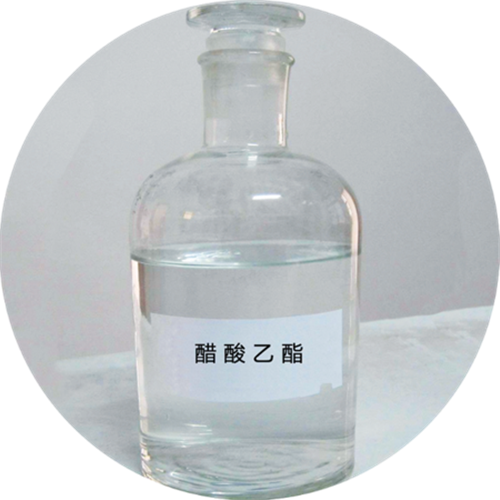- Liquid chemistry
- Dichloroethane
- DMF- dimethyl formamide
- Epoxy propane
- Dichloro propane
- Propylene glycol
- Glacial acetic acid
- Aniline
- Dimethyl carbonate
- Triethylamine
- Ethyl acetate
- Tetrahydrofuran
- Isopropyl alcohol
- Methyl acetate
- Butyl acetate
- Ethanol
- Acetonitrile
- Trichloroethylene
- Are propanol
- N-butyl alcohol
- N-butyl aldehyde
- N-hexane
- Methanol
- Formic acid
- Epichlorohydrin
- Cyclohexane
- Cyclohexanone
- Xylene
- Pyridine
- Phenol

Ethyl acetate, also known as ethyl acetate. Is a colorless transparent flammable liquid with fruit aroma. Low toxicity. Volatile. Relative density 0.902. Melting point - 83 ℃. The boiling point of 77 ℃. Refractive index 1.3719. Flash point 7.2℃ (open cup). Slightly soluble in water, soluble in alcohol, ketone, ether, chloroform and other organic solvents.
Pure ethyl acetate has a pungent odor, is sensitive to air, and can absorb water, making it hydrolyze slowly and become acidic. Can dissolve some metal salts (such as lithium chloride, cobalt chloride, zinc chloride, ferric chloride, etc.). Its steam and air can form an explosive mixture, meet open fire, high heat energy caused combustion explosion.
Chinese name ethyl acetate
Do not call ethyl acetate, beet molasses droppings
Molecular weight 88.11 g·mol? 1
EINECS login number is 205-500-4
Boiling point 77 °C (350.25k)
Dense degree of 0.902 g/mL
Flash point - 4 ° C
Security description S: s16-s26-s33
R: r11-r36-r66-r67
SMILES CC OCC (= O)
Viscosity 0.426 (25 °C)
The main hazard is flammable and irritating
UN no. 1173
Health hazards can irritate the eyes, nose and throat
Ethyl acetate
Chemical formula C4H8O2
CAS login number is 141-78-6
Melting point -84 °C (189.55k)
Water solubility 8.3g /100 mL (20 °C)
Outer colorless liquid
Should be used in organic chemical, fragrance, paint, medicine and other industries
Hazard symbol NFPA 704
Transport number 32127
Diopter 1.3720
The dipole moment of 1.78
Critical point 250.11 °C (523.26k)
RTECS AH5425000
1, as industrial solvent, used in coatings, adhesives, ethyl cellulose, artificial leather, linoleum colorant, artificial fiber and other products.
2. Used as adhesive to produce printing inks and artificial pearls.
3. Used as extraction agent for the production of medicine, organic acid and other products.
4. It is used as the main raw material of pineapple, banana, strawberry and other fruits essence and whisky, cream and other spices. Flavor manufacturing, can do liquor blending with spices, artificial flavor.
5. Extractant, which extracts many compounds (phosphorus, tungsten, arsenic, cobalt) from aqueous solutions.
Ethyl acetate
6. Organic solvent. When separating sugars, it serves as the standard for calibrating thermometers.
7. Verify bismuth, gold, iron, mercury, oxidant and platinum.
8. Determination of bismuth, boron, gold, iron, molybdenum, platinum, potassium and thallium.
9. Biochemical research, protein sequence analysis.
10. Environmental protection and pesticide residue analysis.
11. Organic synthesis.
12, is cellulose nitrate, ethyl cellulose, cellulose acetate and neoprene quick drying solvent, is also used in the industry low toxicity solvent.
13. It can also be used as cleaning agent for textile industry and extraction agent for natural flavor, and it is also an important raw material for pharmaceutical industry and organic synthesis. [1]
14. GB 2760 -- 96 specifies the permitted edible spices. Mainly used for fragrance, persimmon astringent, making spices particles or tablets, brewing vinegar ingredients. Widely used to make cherry, peach, apricot and other fruit flavor and brandy flavor.










